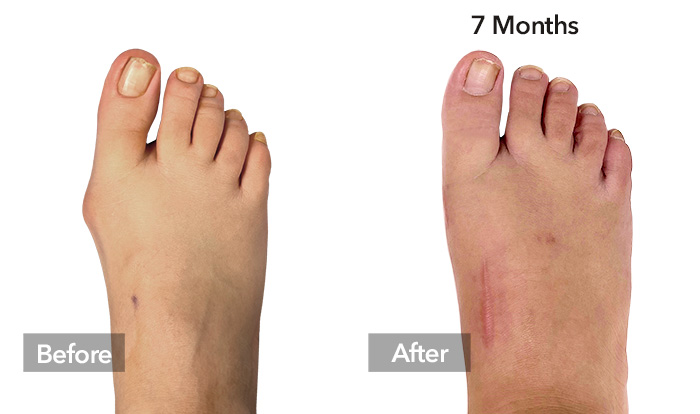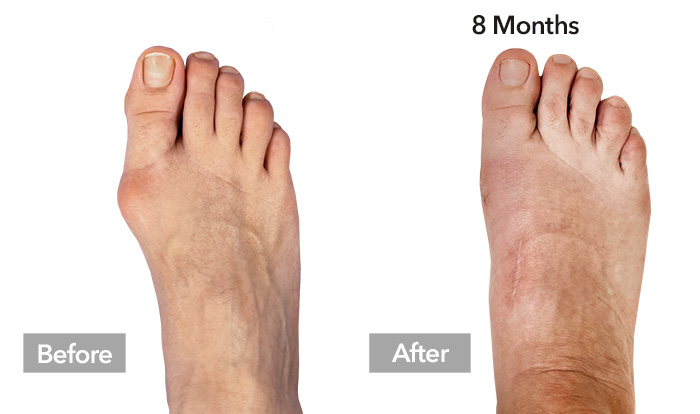What are Bunions?
A bunion—also called Hallux Valgus—is a bump that appears inside the foot, around the metatarsophalangeal (MTP) joint (near the big toe). This bump is actually a bone protruding towards the inside of the big foot. Left untreated, bunions can cause sever pain and even hinder walking abilities.
Bunions are a common problem most women deal with, but men develop them too. Most people develop bunions from wearing poor-fitting shoes—though they can also be passed down genetically as well.
Types of Bunions
Bunions typically develop when the weight of your body falls unevenly on the joints and tendons in your feet. This is usually due to poor-fitting shoes or genetic deformities. The most common types of bunions include:
- Tailors bunion: Also called a bunionette, Tailors bunions occur when the fifth metatarsal bone (smallest toe) starts to expand outward, forming a bony growth near the little toe.
- Acute bunion: This condition causes bony masses to form near the toe joints as a result of bursitis.
- Adolescent bunion: Teenagers may develop a bunion at the vase of his or her big toe. This bunion may cause pain and can get worse over time without treatment.
Lapiplasty Treatment
Lapiplasty is a revolutionary surgical procedure used to correct deformities of the big toe, particularly those related to bunions. Traditional bunion surgery focuses on shaving the protruding bone or shifting it horizontally. Lapiplasty, on the other hand, addresses the root cause of the problem by realigning the three-dimensional deformity of the toe. The procedure corrects the misalignment not just at the bone level but also at the joint, providing a more comprehensive and lasting solution.
During Lapiplasty, specialized instruments are used to precisely correct the alignment in all three planes, effectively restoring the natural anatomy of the foot. Once the correction is made, the bones are secured with titanium plates, allowing for quicker recovery and enabling patients to bear weight on the foot earlier than with traditional methods.
Lapiplasty offers several advantages over traditional bunion surgery, including reduced risk of recurrence, more rapid recovery, and an overall more anatomically correct repair. It’s considered an excellent option for those with significant bunions or deformities and those who have not found relief through other treatments or surgeries. Like any surgical procedure, it’s essential to consult with a skilled podiatric surgeon to evaluate if Lapiplasty is the right choice for your specific condition.



How can Bunions be Treated?
If left untreated, bunions can become so painful that you might end up walking differently just to relieve the pressure. Because the MTP joint helps bear and distribute bodyweight while standing, bunions can seriously affect the foots ability to function properly.
To treat bunions, your healthcare provider will begin with conservative methods designed to relieve pressure and restore function. The most common conservative approaches to alleviating bunions include:
Conservative approaches like these are designed to limit the progression of the bunion, relieve pain, and provide a healthy environment for the foot. In more serious cases, bunion surgery may be recommended. Ask your doctor for more information during your next consultation.

